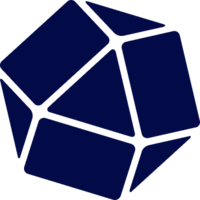petgraph
nphysics
Our great sponsors
| petgraph | nphysics | |
|---|---|---|
| 7 | 2 | |
| 2,648 | 1,615 | |
| 4.8% | 0.3% | |
| 7.0 | 0.0 | |
| 2 days ago | almost 3 years ago | |
| Rust | Rust | |
| Apache License 2.0 | Apache License 2.0 |
Stars - the number of stars that a project has on GitHub. Growth - month over month growth in stars.
Activity is a relative number indicating how actively a project is being developed. Recent commits have higher weight than older ones.
For example, an activity of 9.0 indicates that a project is amongst the top 10% of the most actively developed projects that we are tracking.
petgraph
-
Borrow Checking, RC, GC, and the Eleven () Other Memory Safety Approaches
Are you just trying to throw shade on Rust?
https://doc.rust-lang.org/std/collections/struct.LinkedList....
> NOTE: It is almost always better to use Vec or VecDeque because array-based containers are generally faster, more memory efficient, and make better use of CPU cache.
https://docs.rs/petgraph 78 M downloads
-
The Hunt for the Missing Data Type
I used to think that since graphs are such a broad datastructure that can be represented in different ways depending on requirements that it just made more sense to implement them at a domain-ish level.
Then I saw Petgraph [0] which is the first time I had really looked at a generic graph library. It's very interesting, but I still have implemented graphs at a domain level.
[0] https://github.com/petgraph/petgraph
-
Many of the typical "Algorithms" as plain Rust implementation
For graph algorithms specifically, also consider looking at the implementations in petgraph.
-
2-way Weak
Take a look at: https://github.com/petgraph/petgraph
-
autograph v0.1.0
Render the backward "graph" using petgraph for visualization and debugging purposes.
-
Another graph library :)
I second the need for quickcheck-style tests. I implemented a matching algorithm in petgraph, and quickcheck discovered so many bugs on non-trivial graphs. Thanks to it, I am now much more confident that it is indeed correct.
-
Why Rust for Robots?
petgraph: Graph data structure library, compatible with Rust
nphysics
-
Does anyone know a physics engine where I could simulate a building collapse or such?
Do you need to include fracturing? Is a simple "disassembly" sufficient? If it's rather a disassembly, then bulletphysics. Or take a look at this https://nphysics.org/
-
Why Rust for Robots?
nphysics: A 2D and 3D physics engine that can be used for robot simulation
What are some alternatives?
autograph - Machine Learning Library for Rust
rustimization - Collection of Optimization algorithm in Rust
rosrust - Pure Rust implementation of a ROS client library
ncollide - 2 and 3-dimensional collision detection library in Rust.
optimization-engine - Nonconvex embedded optimization: code generation for fast real-time optimization
nalgebra - Linear algebra library for Rust.
prepona - A graph crate with simplicity in mind
rust-gmp
graph-force - Python library for embedding large graphs in 2D space, using force-directed layouts.
scirust - Scientific Computing Library in Rust
openrr - Open Rust Robotics
collenchyma - Extendable HPC-Framework for CUDA, OpenCL and common CPU
